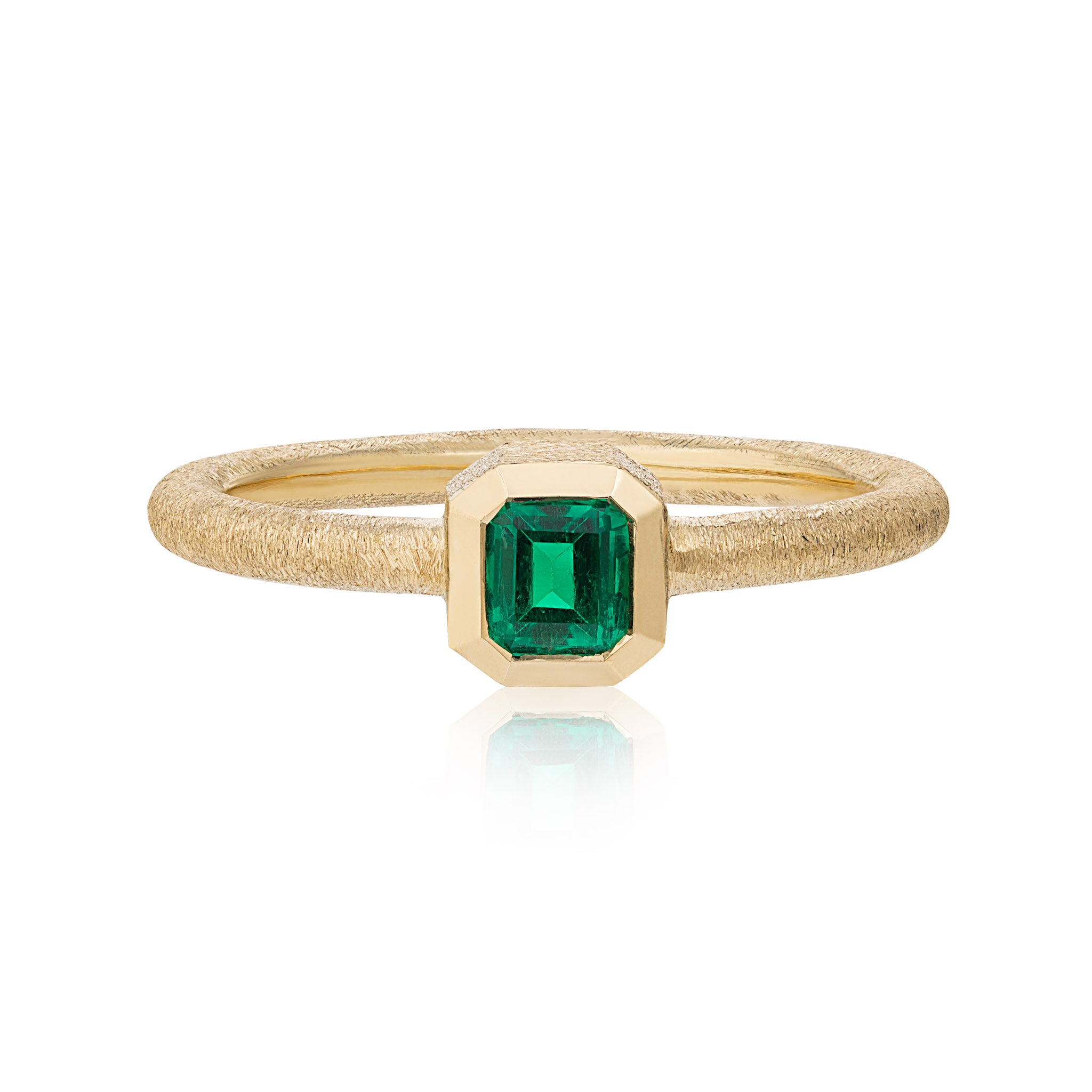As jewellery lovers, we are all educated in and infatuated with the emerald; member of the beryl family and one of the most popular precious gemstones on the market. Famed for their Jardin inclusions and enchanting green hue, the emerald often takes on a unique cut and can receive numerous treatments to make it the desirable hue and saturation that is so sought after. However, in very rare cases trapiche emeralds can form - highly distinct and incredibly beautiful, a rarity that is sold at a pretty price within the gemstone trade.
The trapiche (pronounced tra-PEE-che) name originates from a grinding wheel used in Colombia, South America. The population within the emerald mining region use these wheels to process sugarcane, rotated by oxen tied to a yoke. The emerald itself also resembles these grinding wheels, with radial spokes and a hexagonal core, first described in 1879 by French mineralogist Emile Bertrand.
Some trapiche emeralds mined display this hexagonal core and some do not – however there is currently not enough evidence to indicate if this is due to the region it is mined in or its creation environment. Trapiche formation can also occur within other gemstone species such as rubies, sapphires, and aquamarines.
Despite its spoked star like appearance, these stones are not host to asterism – an optical property in which inclusions can produce a star-stone light effect across a gemstones surface. However, within the segments of the trapiche you can witness chatoyancy, or ‘Cat’s Eye’ effect (Think of Tiger’s Eye gemstones, the optical effect they display is a form of chatoyancy). Expert lapidaries can bring out this chatoyancy within the pie-like sections, created from parallel growth of tube inclusions, and, in some very rare cases, can display chatoyancy across the length of the emerald itself.
The formation of trapiche emeralds are complex, with the majority found within black shale host rocks along the western belt of the Eastern Cordillera Basin. As an emerald crystal forms, black carbon can enter the gemstone mix. Emeralds cool in a hexagonal crystal structure, and so during cooling this black carbon settles within its crystal junctions forming a radial six-pointed pattern. In some rare trapiche emeralds, albite, quartz, or lutite can outline the hexagonal core, and from here they extend into six trapezoidal sectors. They are crystallised in similar hydrothermal conditions as other Colombian emeralds, however their unique texture is a result of complex growth history and variations of fluid pressure within the structural geology.
Keep an eye out for when our new stock goes live, we have a couple gorgeous 18K yellow gold trapiche emerald pendants coming onto the market - you dont want to miss out!
Related Articles
Ten of the World's Most Famous Diamonds
Regal Rubies: The Most Expensive Rubies Sold at Auction
Diamonds from the Rough: The Secret to Gemstone Polishing
Written by Victoria Fletcher


 (31)
(31)
